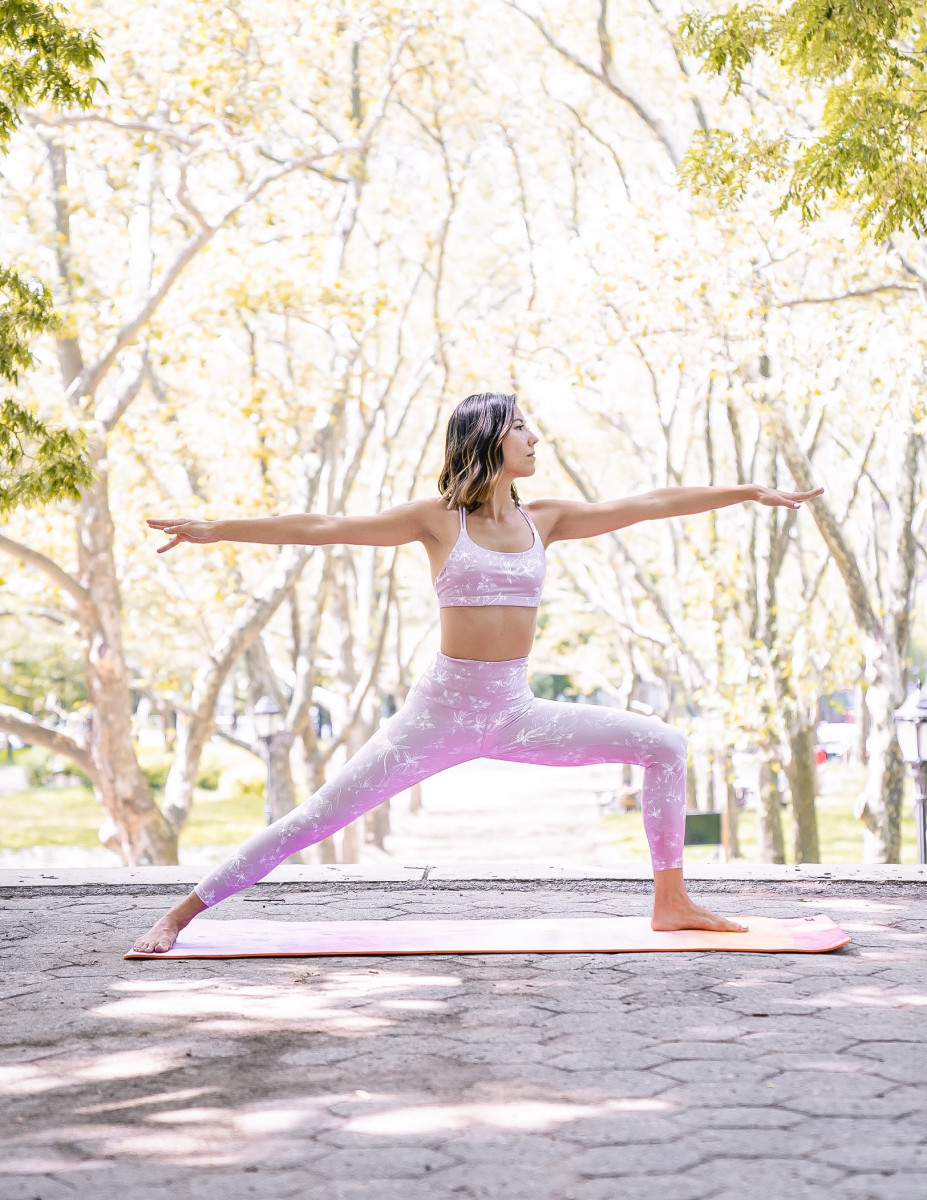
It’s been awhile since I’ve written a #YogaTipTuesday post and if you’re a beginner yogi, this topic is for you! There’s no denying yoga has continued to grow in popularity here in the US. It seems like everyone is doing it and there are so many studios popping up every day. Yet as popular as yoga has become, it can still be very polarizing for people. Some people view it as nothing more than a recovery method. Others think it’s too spiritual or even religious. I’m here to debunk a few of these common myths and also offer up some important things I wish I knew when I first started my yoga practice 6 years ago.
If you’ve been following me for awhile you know yoga was the very reason I started this blog. As cliche as it may sound, yoga was the catalyst that started my entire wellness journey and therefore I’m a huge advocate. With so many different styles and classes to choose from, I guarantee there’s something that will appeal to everyone.
I remember when I was new to the practice there were so many things that intimidated me. Everyone I followed on Instagram was ridiculously bendy and flexible — two things I 100% was not. I was so careful not to go to a class that chanted “OM” in fear that I was suddenly praying to a mystical Hindu deity. Inversions also scared the crap out of me. Handstands, forearmstands, and even arm stands like crow pose felt so out of reach. I was 24 years old when I started practicing and I felt like I was “way too old” to actually make any progress.
The good thing is, I didn’t let any of those limiting thoughts stop me from getting on my mat. Now, 6 years later, I’m super comfortable with what my body allows me to do. There are many limitations to my practice and some poses that may always be out of reach. But somewhere along the line I stopped striving for the crazy, cool asana poses and searched for deeper clarity and introspection instead. I love my practice because it has allowed me to be more in tune with my body than ever before.
My hope is that this is the start of a life long yoga practice for you. And to help you on your journey, I’ve rounded up a few important bits of info below. Let’s get started…
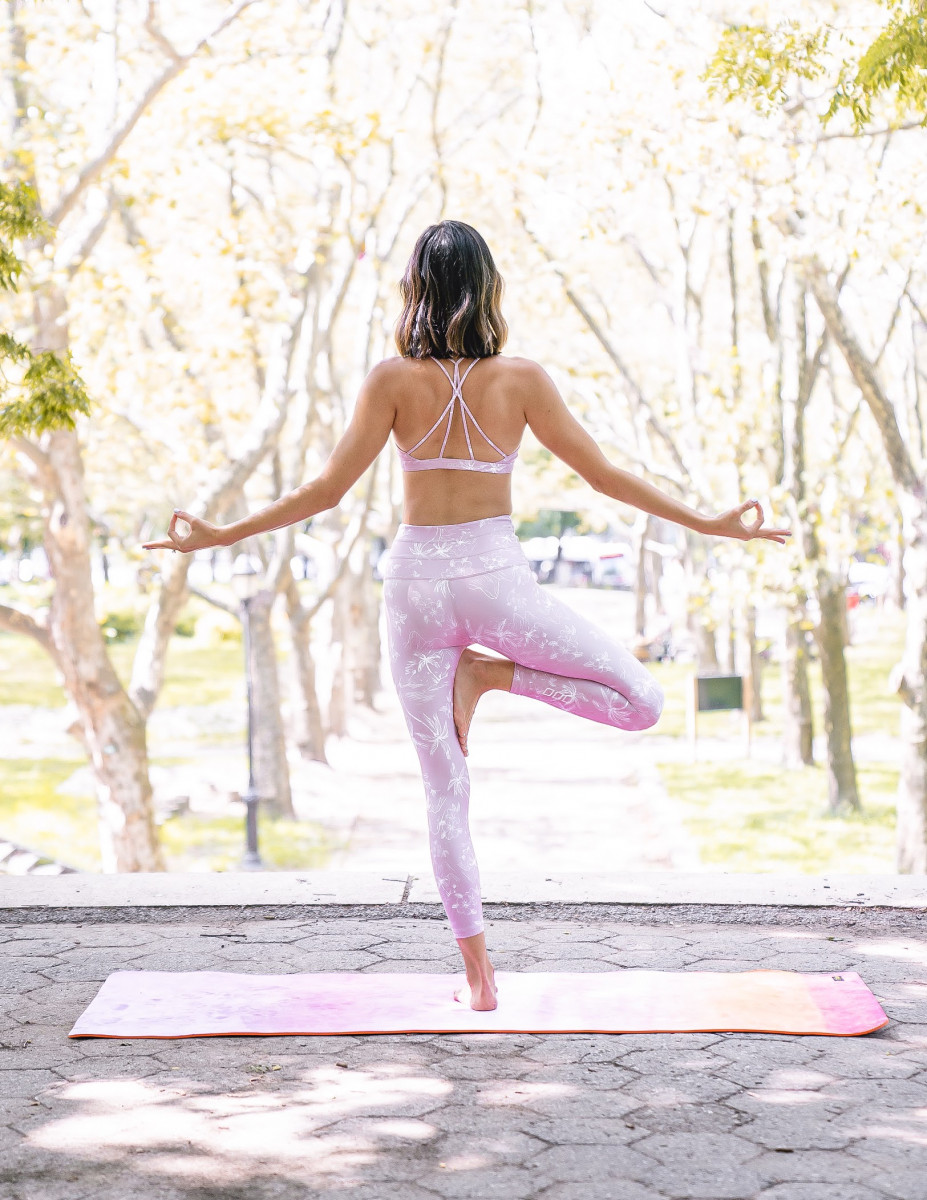
Props Are Your Best Friend
Picture this. You walk into a yoga class and set up your mat. The teacher begins to walk you through the asana practice and before you know it you find yourself struggling in Triangle Pose. Your breath is shortened, your hamstrings are on fire, and you’re not even sure if you’re doing the pose right. The teacher suddenly comes up and places a yoga block under your hand. And even though the pose suddenly felt so much better, you’re a little frustrated. You didn’t grab a yoga block… why did they bring you one? Are they saying you’re not good at yoga?
Okay, I’ve literally just narrated all the thoughts that went through my head when I first started going to yoga classes. I never grabbed blocks or straps because I was convinced I didn’t need them and that it would make my practice too “simple.” I’m sure you’re not surprised to hear that all that is a bunch of bologna right?
Props are there for a reason. And that’s to help you get the absolute most benefits out of each individual pose. Once you know how to use them, they can be such a wonderful way to strengthen your practice and help you into more advanced postures. Let your ego go and use the props to your advantage. I promise it doesn’t make you “bad” at yoga. In fact, they make you even more of a yogi because you’re learning to honor and listen to your body.
I have an IGTV video sharing multiple ways to use a yoga block during your next flow. You can watch it HERE.
What If You Can’t Do a Pose?
This is normal. You’re going to run into poses that are simply not accessible for you at this time and that is okay. When you choose to attend open level classes you’ll be in the room with people who are beginners like you and some who have been practicing yoga their entire life. Remember that you do not need to feel obligated to do or look like anyone else in the class.
It’s important to challenge yourself, however when that challenge puts your body at risk of injury then you’ve gone too far. Listen for the modifications the teacher is most likely cuing to the class and do your best to follow them. So if this means doing half splits instead of full Hanumanasana, or chaturanga on your knees instead of the full expression, that is WONDERFUL. If you’re completely unsure of a pose and don’t feel up for the challenge of trying a modified version, you can always come back to child’s pose or downward dog instead. The teacher won’t judge you and you shouldn’t judge yourself for that either.
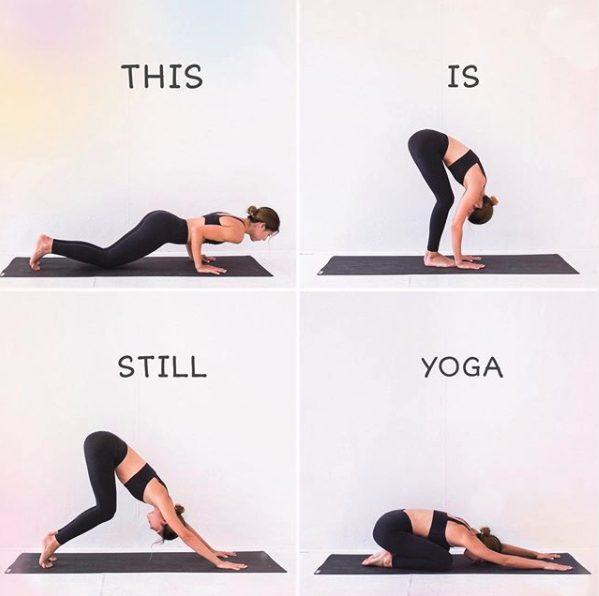
Yoga is Not Religious
I talked about this briefly in THIS blog post after completing yoga teacher training. It is such a common misconception that practicing yoga means you’re participating in some Hindu or Buddhist activity. This is simply not the case. Yoga was created as a pathway to still the mind. Within that path, there are multiple routes you can take… a spiritual practice or an agnostic/atheistic view. The asana itself does not conjure up any sort of deity. Chanting “OM” does not mean you’re worshiping any God. To put it bluntly, yoga in the western world is a secular multi-billion dollar industry with many studios that won’t have a single “spiritual” element involved.
Just because yoga isn’t religious doesn’t mean it can’t be a nice complement to whatever religion you practice. In fact, I’ll be teaching classes on a Christian Yoga streaming service called Grace x Strength soon and that, as you can imagine, combines Christian faith with yoga asana.
There are many studios that weave in plenty of spiritual elements as well. It’s up to you to find a class that really speaks to you and that you ultimately feel comfortable with.
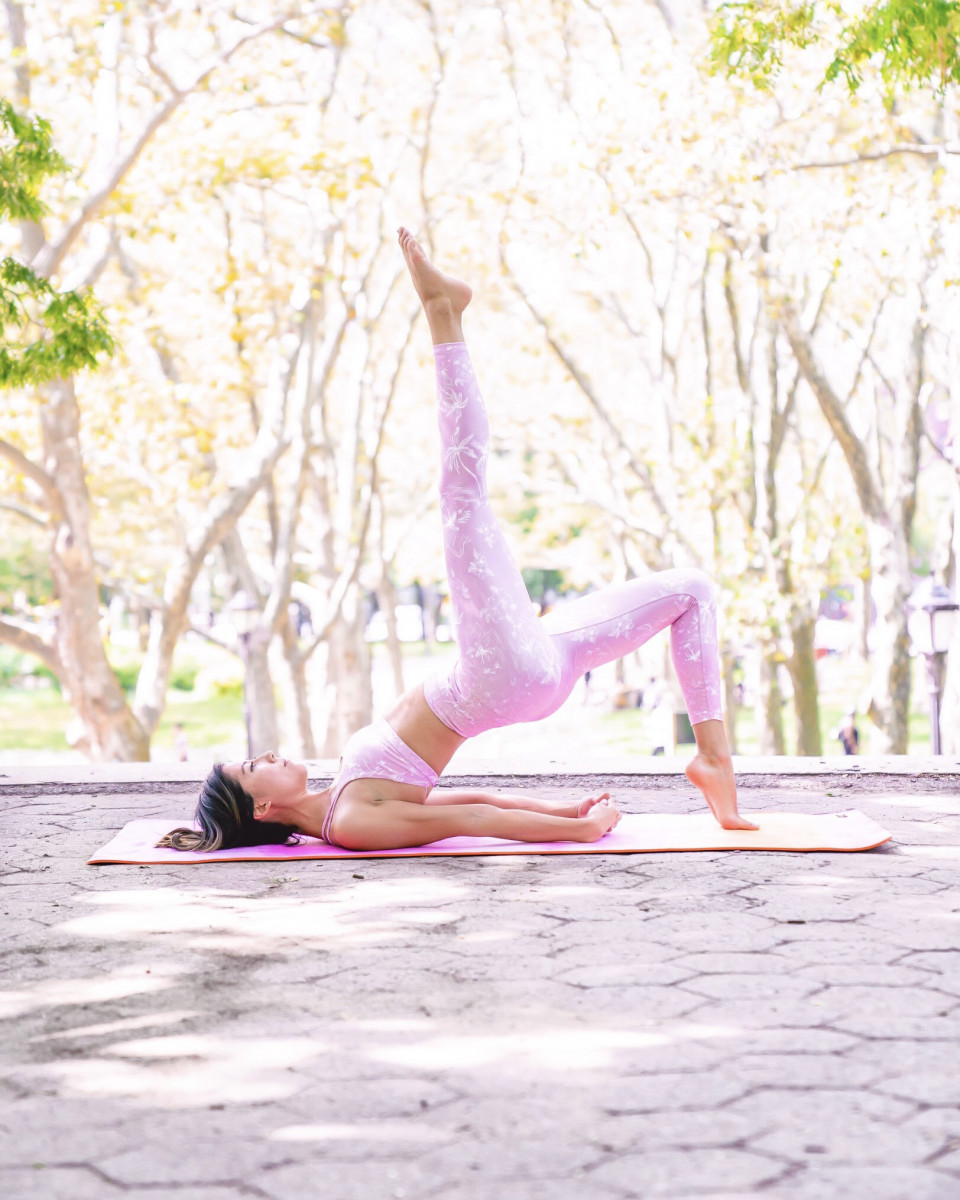
You Probably Shouldn’t Eat Right Before Practicing
I’m not telling you how to live your life so if you’re the type that needs food before a workout, by all means eat! I would just recommend keeping the meal relatively light (my go-to’s are oatmeal, smoothies, or an apple with peanut butter) and try to consume it at least an hour before class. During yoga teacher training, our mentors really stressed that yoga is meant to be practiced on an empty stomach. This is mostly because of the insane amount of twists and inversions there are that will really effect the state of your stomach. When your stomach is full, you feel heavier, and things like headstands and even forward folds feel a bit more difficult. You also risk feeling nauseous and having to excuse yourself halfway through the class… which is everyone’s worst nightmare.
THIS article goes a bit more in-depth on what you should and shouldn’t eat before and after yoga practice. At the end of the day, you know your body best and what you need to power through a workout. But personally, I feel best when I practice on an empty stomach with my last meal having been at least 4 hours earlier.
No One Is Looking At You
I know how intimidating it can be to walk into a crowded yoga class. It’s okay to find a spot in the back of the room if that’s where you’re comfortable. However, I would encourage you to find a spot closer to the instructor. I promise that no one else in the class is looking or cares what you’re doing. They aren’t judging you if you’re in bridge pose while they’re in wheel or if you fall out of tree pose. If there are mirrors in the room they are 100% looking at themselves. If there aren’t mirrors, they’re stuck in their own heads and trying to breathe through the tough poses just like you are. Yoga is such a space of non-judgement and you should never compare yourself to the person next to you. Focus on yourself, your breath, your body. Leave the competition to spin classes like Flywheel.
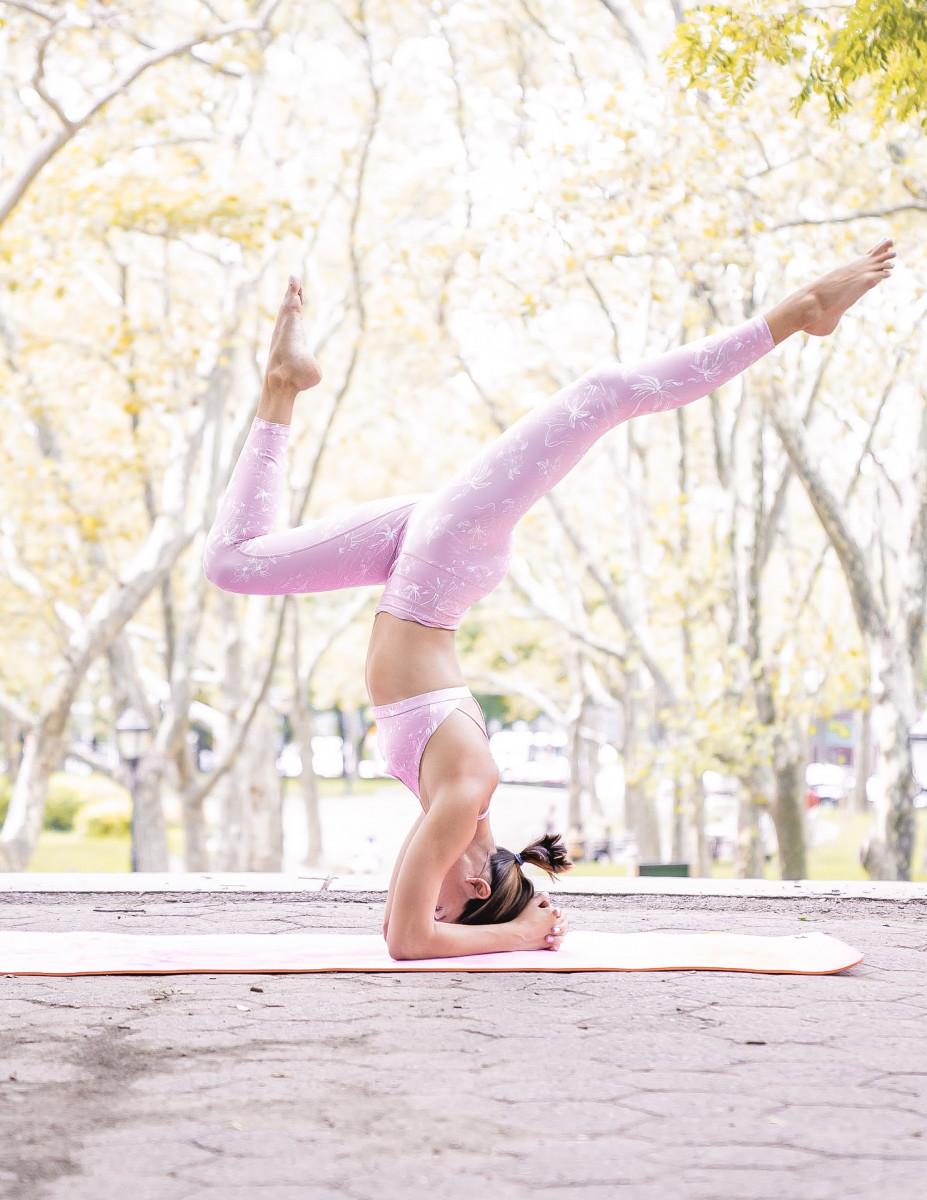
Get Comfortable with the Basics
Okay, let’s get really real here. There are some really cool looking advanced yoga poses out there. Peacock pose, chin stand, sugar cane… all of these look gorgeous but are hard AF. I know it can be fun to try them out but the reality is they are labeled “intermediate or advanced” for a reason. Just like in any other fitness modality, you simply can’t run before you can walk. An arm balance like crow won’t feel good if you don’t already feel strong in poses like chaturanga, plank and even malasana. Splits will be out of the question if your hamstrings seize up in forward fold. Getting comfortable with the basics are the very foundation of a good yoga practice!
If you’re wondering what basics I’m talking about THIS is a great roundup of 12 poses. Additionally, Sun Salutation A and B both offer up a foundational mix of flexion and extension poses. It can take years to finally feel comfortable in the basic postures so don’t be hard on yourself if you’re struggling in any of the poses listed. Take your time and go at your own pace.
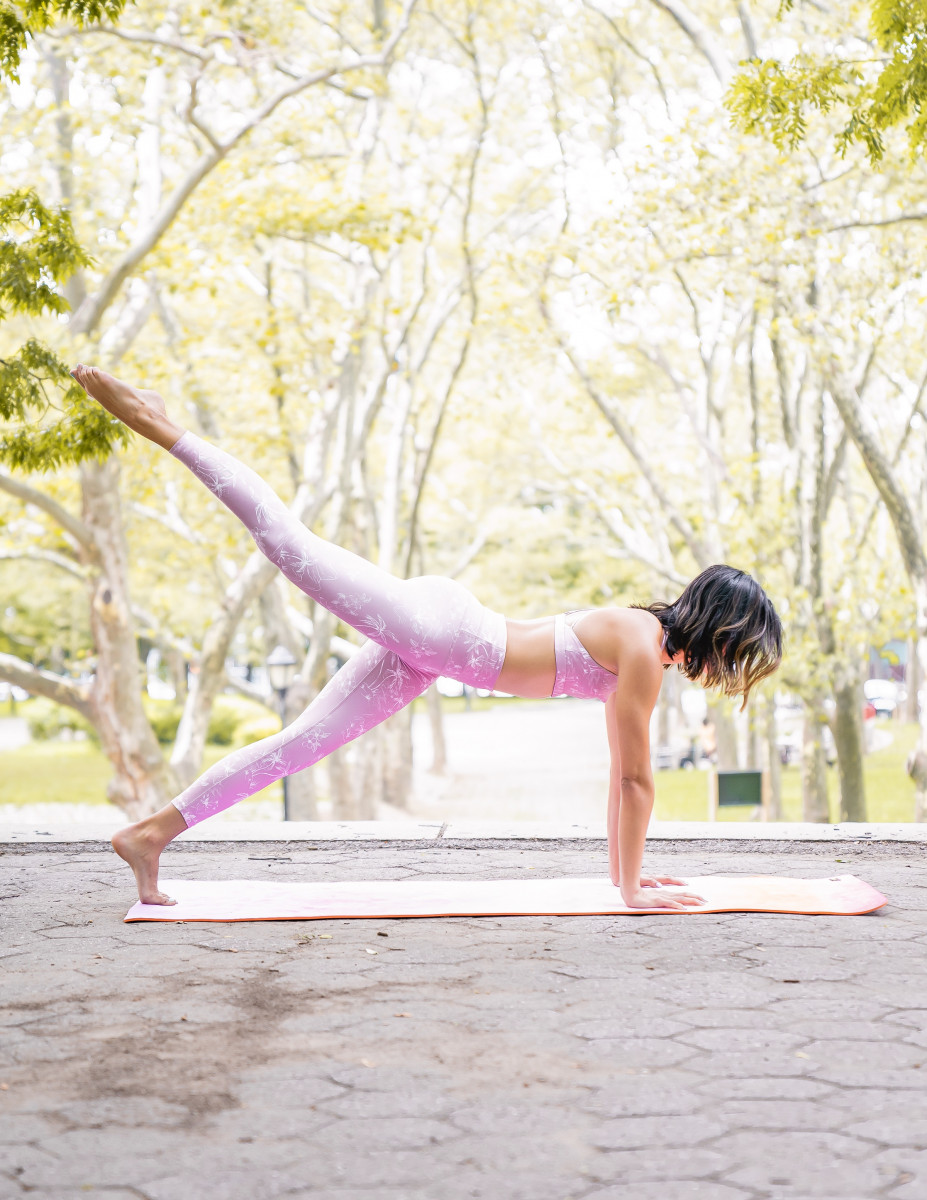
If You’re Focusing on Your Breath, You’re Doing Yoga
At the core of any yoga practice is a connection to the breath. That’s because our breath is our very life force. This life force, or prana, is moving through us naturally at all times of the day. When we’re on our mat, we have an opportunity to control and observe it. By focusing on our breath, we establish a deep mind body connection that doesn’t happen in most other forms of fitness. Regulation of our breath, also known as Pranayama, not only increases self-awareness but can also reduce anxiety, alter our mood, and improve our focus.
You don’t have to be doing a specific pose in order to be doing yoga. Simply by sitting still and observing your breath moving in and out of your body is a form of yoga practice all on it’s own.
It Shouldn’t Hurt
There is a major difference between a pose being uncomfortable and a pose hurting. Unfortunately, there are times when you’re just starting out that it’s difficult to tell the difference because everything feels super uncomfortable. Only you know what’s happening with your body and if at any point feel sharp pain or your muscles seizing up, it’s best to stop. Yoga is such a wonderful tool for recovery but it can also cause so many unnecessary injuries if you let your ego get in the way. Pay attention to your form and listen carefully to what the teacher is saying.
A few good rules of thumb are:
- Keep your joints stacked. ex: Shoulders above wrists in plank and front knee above ankle in lunge
- Never put pressure on a delicate joint. ex: Place your foot below or above your knee in tree pose, never on the knee itself
- Always warm up
- Don’t hyperextend. If you’re super flexible, it’s better to pull back and focus on strengthening within a pose rather than pushing your body to it’s full limits
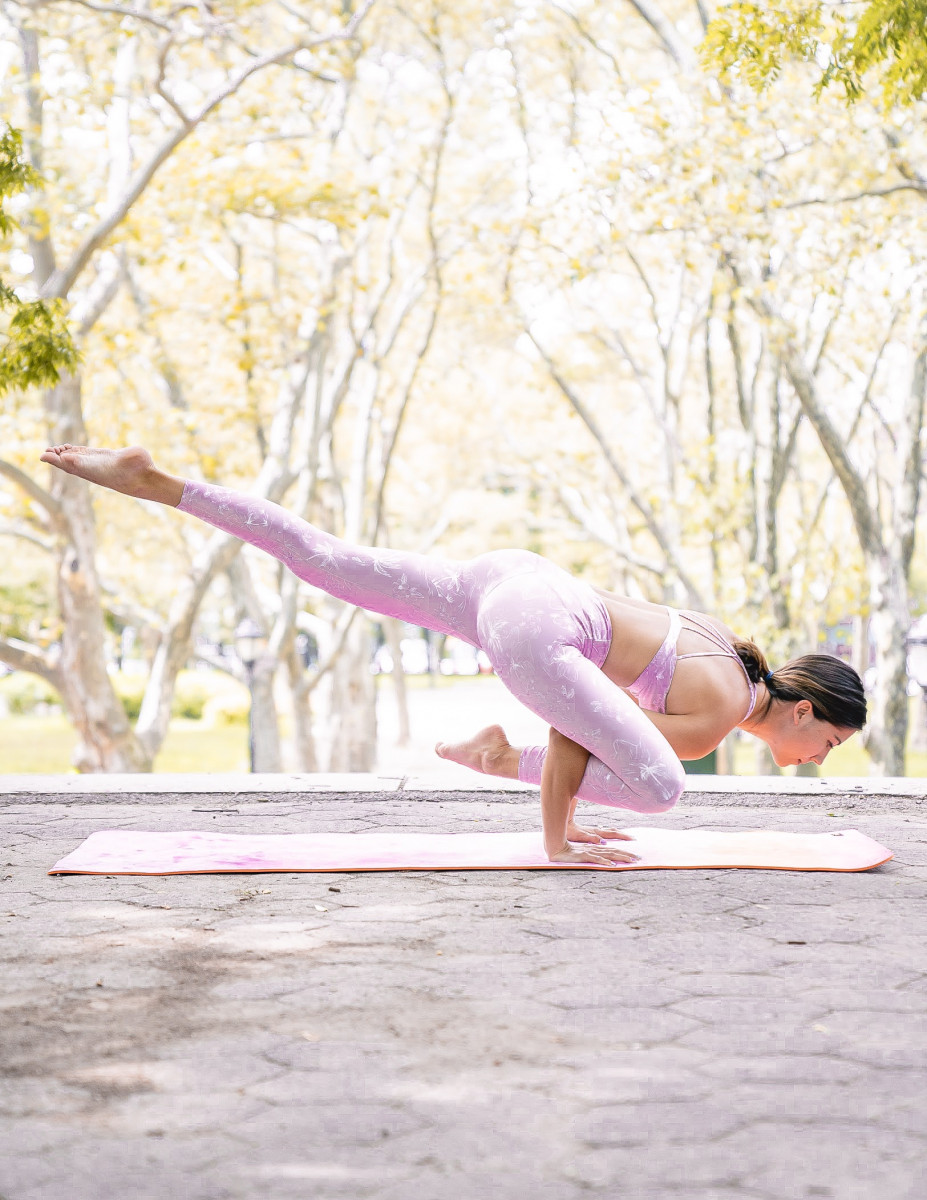
Self Study Is Everything
There’s only so much you can get out of a yoga class. The teacher won’t be able to give you individual attention and you’re kind of at the mercy of whatever the class offers. That’s why nothing will every replace a home yoga practice and self study. When I first started practicing yoga I did it entirely at home through watching Youtube tutorials. It forced me to really pay attention to my body and explore my own limitations. I read up on the names of all the yoga poses and the correct form for each. When I started sharing my practice on social media I knew I needed to eventually take it to the next level and explore a teacher training.
Even if you don’t ever want to become a yoga teacher, arming yourself with knowledge will only deepen your practice. Start with reading up on what the different asanas are, why we practice them and most importantly, what the proper alignment is for each. The more you can study and explore on your own, the better you’ll feel in a class setting and the faster your practice will progress.
Try Multiple Studios and Teachers
Every studio and every instructor has their own spin on yoga. With so many modalities out there it’s a complete disservice to you if you only try one and decide you don’t like it. That would be similar to going to one restaurant and ordering a chocolate cake that comes out super dry, and then deciding you hate chocolate cake. When you’re first starting out it’s important to explore multiple types of yoga classes: restorative, aerial, acro yoga, hatha, hot yoga, yoga sculpt, vinyasa, yoga nidra, etc. Find one that speaks to you and then find a teacher that vibes with what you’re all about!
You may be surprised at what kind of class you like most.
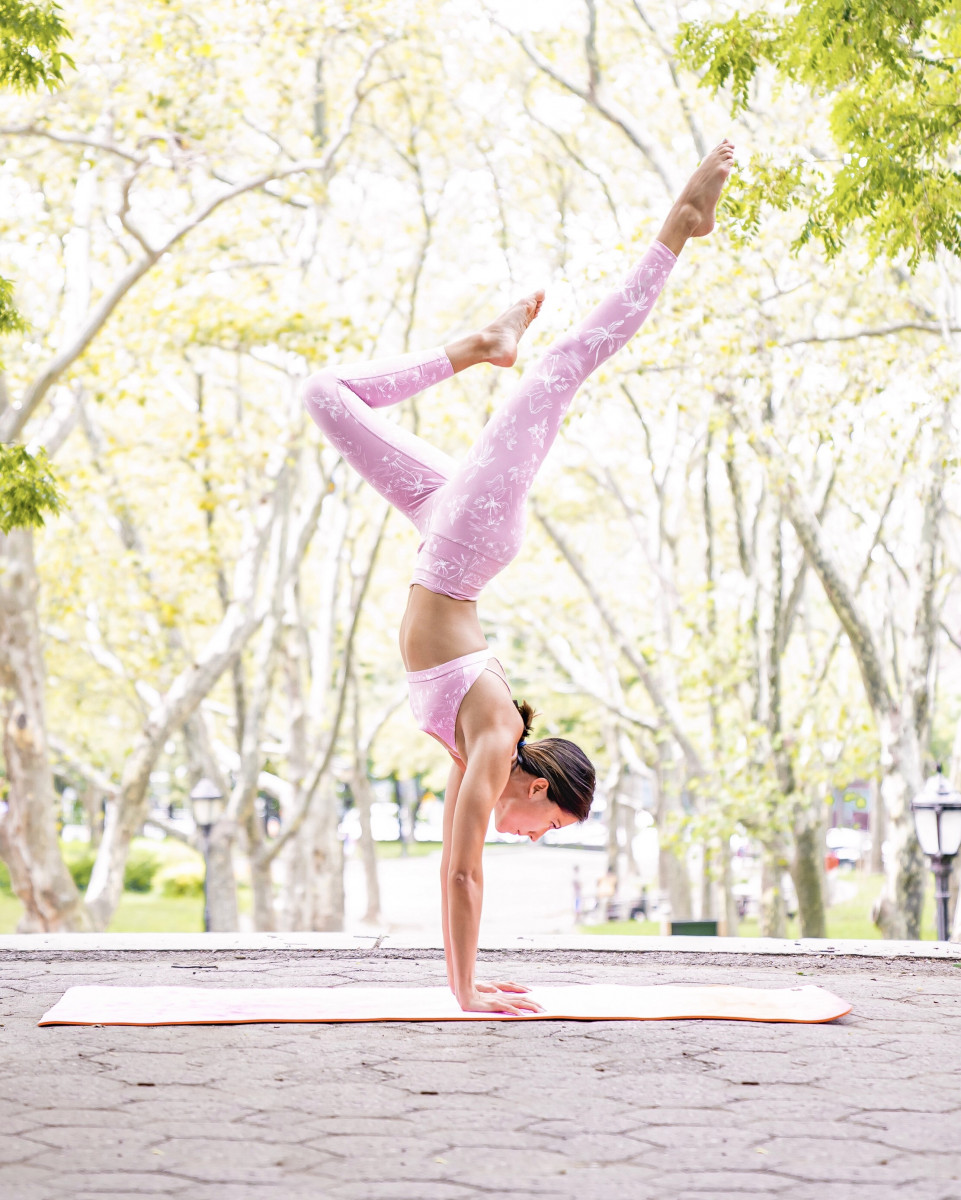
I know this was quite a lengthy post so if you’re still with me, thank you for being here! I hope you found this helpful as you begin your yoga journey. I’m always here for you if you have any questions or thoughts.
With love and light,




Leave a Reply